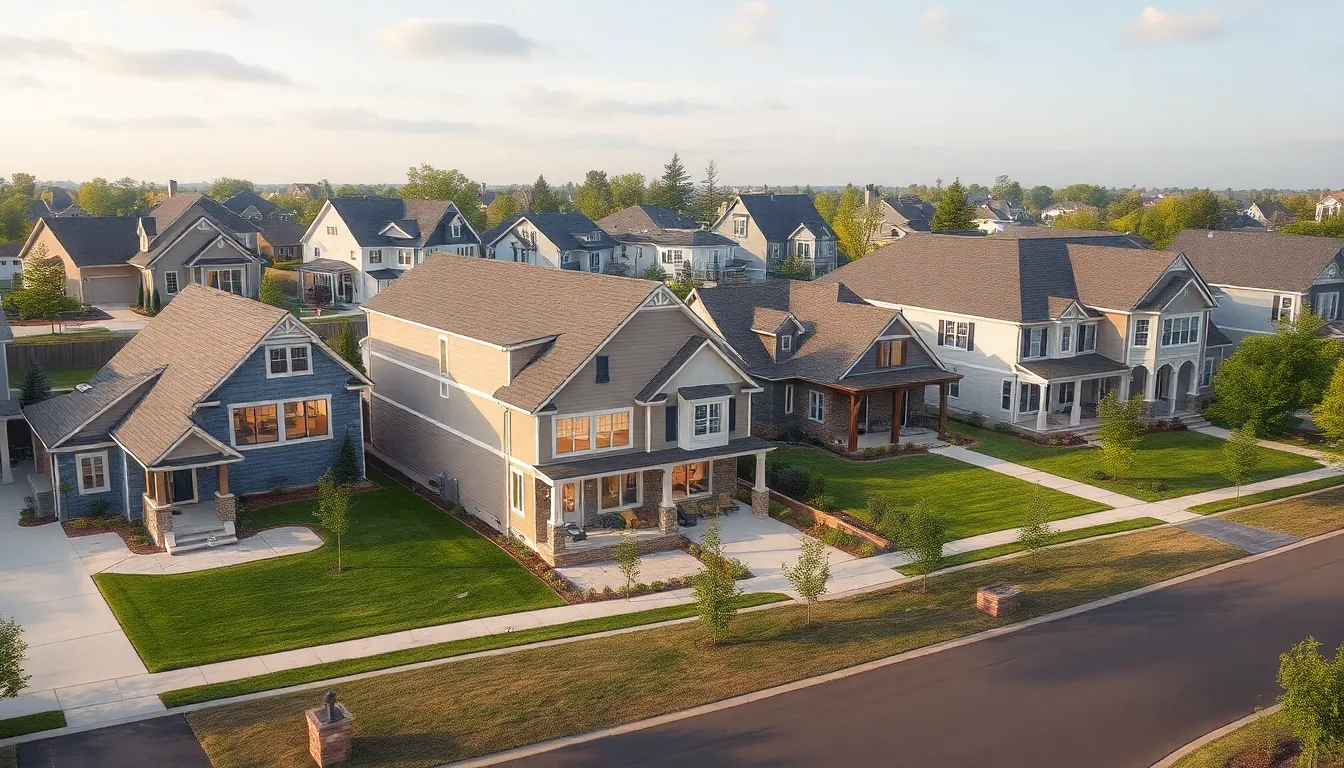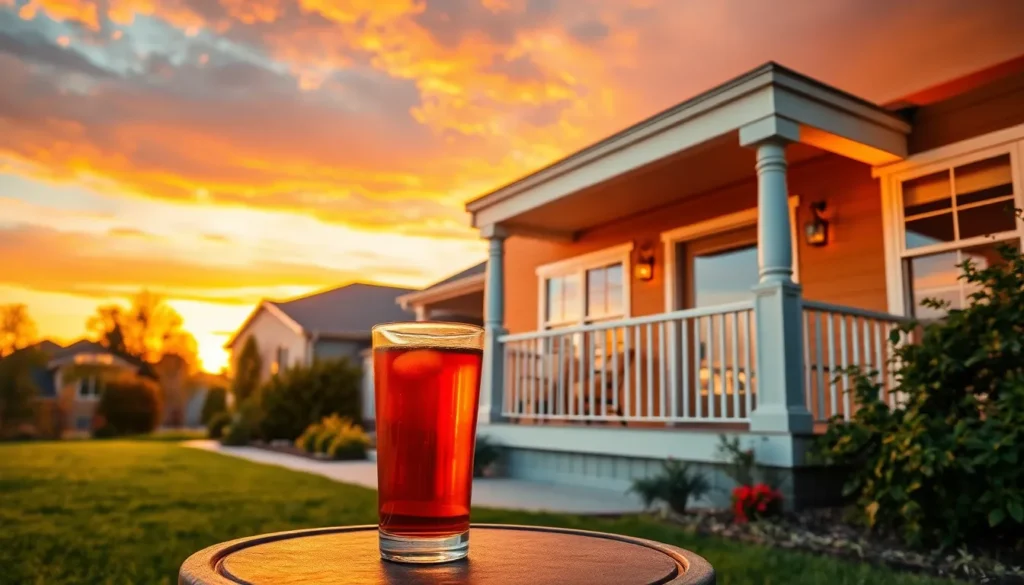Table of Contents
ToggleChoosing the perfect house plan can feel like trying to find a needle in a haystack—if the haystack were made of blueprints and the needle was your dream home. With countless options at your fingertips, it’s easy to get lost in a maze of layouts, styles, and sizes. But fear not! The right house plan is out there, just waiting to transform your Pinterest dreams into a reality.
Whether you’re a fan of cozy cottages or sprawling estates, the right plan can make all the difference. It’s not just about walls and roofs; it’s about crafting a space that reflects your personality and lifestyle. So grab your measuring tape and let’s dive into the world of house plans, where every square foot can be a step toward your future sanctuary. Who knew building your dream home could be this much fun?
Overview of House Plans
House plans serve as blueprints that define the structure and layout of homes. Understanding different house plans is crucial for anyone looking to create their dream home. Various styles exist, including traditional, contemporary, and minimalist designs. Each style offers unique features that cater to diverse preferences and lifestyles.
When homeowners select house plans, they focus not only on aesthetics but also on functionality. Distinct floor plans can maximize space while ensuring comfort. For instance, open-concept layouts enhance social interactions, while defined spaces provide privacy.
Numerous resources exist for finding house plans. Websites, design magazines, and architectural firms frequently showcase a wide range of options. Homeowners may also customize existing plans to better align with their specific needs. Many people appreciate an expandable option for future growth.
In the realm of house plans, sustainability is becoming increasingly important. Eco-friendly designs utilize materials and technologies that reduce environmental impact. Energy-efficient house plans aim to minimize utility costs without compromising comfort.
Selecting the right house plan involves careful consideration of budget, location, and community regulations. Knowing these elements aids in making informed choices. Enthusiasts flourish by researching and exploring features that fit their lifestyle.
House plans ultimately represent a gateway to one’s vision of home. Focusing on personal preferences while staying informed about current trends can unlock creative possibilities. Prioritizing essential elements leads to a plan that resonates with individual identity, making the end result not just a building, but a true sanctuary.
Types of House Plans

Various house plans cater to different lifestyles and preferences. Selecting the right type can enhance both comfort and aesthetics.
Single-Story House Plans
Single-story house plans provide convenience and accessibility. They often feature open floor layouts that maximize space and promote easy movement. Homes in this category suit families with young children or elderly members, thanks to the absence of stairs. Designs can include attached garages or outdoor living spaces, facilitating seamless indoor-outdoor transitions. Many single-story houses prioritize energy efficiency, with options for incorporating sustainable materials. Additionally, they often adapt well to smaller lots, making them an excellent choice for urban settings.
Multi-Story House Plans
Multi-story house plans make efficient use of vertical space. They enable homeowners to create distinct living areas across levels, which fosters privacy among family members. Often, multi-story designs incorporate expansive views and allow for larger outdoor spaces around the foundation. Such homes can support larger families or provide room for guests, featuring amenities like multiple bathrooms and entertainment areas. Flexibility in design promotes customization, allowing homeowners to create spaces that align with personal tastes. Multi-story homes often come equipped with modern technologies that enhance energy efficiency and sustainability, catering to eco-conscious homeowners.
Key Features to Consider in House Plans
Home design involves numerous considerations to ensure functionality and comfort. Key features shape the overall experience of living in the house.
Layout and Flow
Layout affects daily life significantly. Open floor plans promote interaction between rooms, enhancing family connections. A well-thought-out flow minimizes unnecessary barriers, making movement effortless. Key areas, such as kitchens and living spaces, should connect logically for smooth transitions. Privacy also plays a role; locations of bedrooms and bathrooms should provide retreat from communal areas. Options for multi-level designs allow for diverse layouts to fit various lifestyles. These design elements together create a cohesive and harmonious living environment.
Room Sizes and Functionality
Room sizes directly impact usability. Spacious rooms accommodate furniture and activities comfortably. Homeowners often seek a balance between adequate space and efficient usage. Designating specific purposes for each room enhances functionality. For instance, a home office should provide a quiet atmosphere, while a family room fosters social interaction. Consideration of storage options is essential; built-in closets and cabinetry help maintain organization. Equally important are the dimensions of each room; larger spaces invite more flexibility in furniture arrangement. Prioritizing room sizes ensures the home serves its intended purpose effectively.
Popular House Plan Styles
Homeowners often look for styles that resonate with their personal taste and functional needs. Two popular categories include modern and traditional house plans, each offering distinct features and benefits.
Modern House Plans
Modern house plans emphasize simplicity and open spaces. Clean lines and geometric shapes define their exterior designs, creating a sleek appearance. Large windows allow natural light to flood interiors, enhancing energy efficiency. Many modern plans incorporate sustainable materials, reflecting an eco-conscious approach. Interior layouts typically feature open floor concepts that enhance social interactions, allowing family and friends to gather seamlessly. These plans often highlight multi-functional spaces, adapting to various lifestyle needs, from home offices to cozy living areas.
Traditional House Plans
Traditional house plans evoke timeless charm and elegance. Characterized by classic architectural elements, these designs often include steep gable roofs, brick facades, and welcoming front porches. Interior layouts usually consist of defined spaces, providing a sense of separation and privacy among rooms. Many homeowners appreciate the abundant storage options and built-in cabinetry, enhancing organization and functionality. Traditional plans frequently incorporate features like formal dining rooms and cozy family rooms, catering to those who value a structured yet inviting atmosphere. The allure of tradition lies in its ability to create comfortable, welcoming homes that stand the test of time.
Choosing the right house plan is an exciting journey filled with opportunities for personalization and creativity. With countless styles and layouts available, homeowners can find designs that truly reflect their lifestyles and preferences.
Emphasizing both aesthetics and functionality ensures that the chosen plan meets practical needs while also providing a comfortable living space. By considering sustainability and future expansion, individuals can create a home that not only serves them today but also adapts to their evolving needs.
Ultimately, investing time in selecting the perfect house plan paves the way for a sanctuary that embodies personal identity and enhances everyday life.










